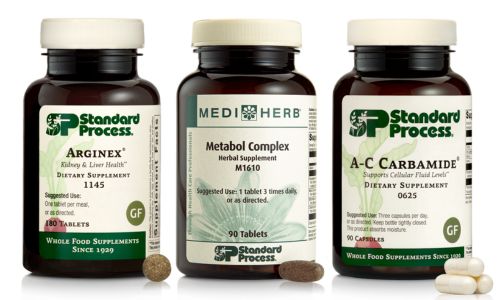By Claire Bacon, ACN, CNC
The global burden of Metabolic syndrome is rising worldwide. This is a set of symptoms, also called MetS or Syndrome X, consisting of widespread inflammation largely due to high triglycerides and insulin. Part of the driving force behind the global epidemic is the expansion of Western fast foods and subsidized corn and soy crops into many other nations besides our own. This is causing a disturbing abandonment of more traditional foods and lifestyle factors that were passed down through generations.
Metabolic syndrome is a multi-faceted process, involving multiple sub-conditions. It is a chronic disease of inflammation. Not everyone experiences symptoms in the same way, however there is one common denominator: a reduced ability to handle sugar and carbohydrates. The #1 symptom of Metabolic syndrome is obesity, although someone could have a poor metabolic profile and still be relatively thin – we tend to call this “skinny fat”. Other top symptoms could be fatigue and increased aches and pains.
Gout is the most common inflammatory arthritis in the US, affecting approximately 4% of the population. Although several effective medicines are available for acute flares, it is generally under-diagnosed and under-treated. Recurrent gout flares can cause significant pain and irreversible joint damage. Therefore, we want all our clients and friends to have a good understanding of the risk factors. In that way, you can practice nutritional strategies that can help you or a loved one.

The Problem of Metabolic Syndrome
Many studies are showing a disturbing trend of increasing Metabolic Syndrome in Americans. According to this one published in 2020, the overall increase in metabolic syndrome prevalence among US adults from 2011-2016 was not much different; however, there was a significant increase observed among young adults. It begs the question: why would younger adults be suffering more frequently? What is it about diet and lifestyle trends in our younger population that is less resilient to metabolic stressors? Could it be the massive popularity of drinking gourmet coffees and sugary drinks every day, all day?
This study, published in 2018, indicates “the two basic forces spreading this malady are the increase in consumption of high calorie-low fiber fast food and the decrease in physical activity due to mechanized transportations and sedentary form of leisure time activities.” Unfortunately, traditional beer is a top offender! Clearly, we need to rethink how our society interacts and spends our free time.
Gout is a more specific and aggravating factor that coincides with having some level of metabolic risk factors. It is an inflammatory arthritis involving a deposition of monosodium urate (MSU) crystals in the joints and soft tissues. Sometimes, an elevated uric acid level may be the first sign that your kidneys are not dealing well with the amount of carbohydrates and sugars in your diet. Even if your Hb A1c and lipids are looking good, it’s smart to check your uric acid and eGFR levels to understand more about your kidney function.

Markers of Metabolic Syndrome and Gout
Gender differences may have something to do with the appearance of metabolic syndrome. In men, the highest risk factors are hypertension and elevated triglycerides. However in women, elevated BMI, low HDL cholesterol, increased waist circumference, and hyperglycemia are larger contributors. According to the most widely accepted definition, a person has metabolic syndrome when at least three of the following are present:
- Obesity: A body mass index (BMI) of 30 or above, or a large waistline (greater than 40 inches in men or 35 inches in women)
- Elevated blood triglycerides: Above 150 mg/dL, especially if the triglycerides are equal to or greater than the total cholesterol number.
- Low HDL (good) cholesterol: Below 40 mg/dL in men or 50 mg/dL in women, often due to lack of exercise.
- High blood pressure: 130 mmHg or above (systolic), or 85 mmHg or above (diastolic)
- Elevated blood sugar: A fasting glucose level of 100 mg/dL or above, or fasting insulin above 8, indicating insulin resistance.

Why is this a problem? Because having these inflammatory markers dramatically increases the risk of developing:
- cardiovascular disease
- diabetes
- liver disease
- kidney disease and gout
- sleep apnea
What makes matters worse is that sometimes the inflammatory effects don’t go away naturally when you lose the excess weight. The weaknesses involved require an intentional strategy of diet and lifestyle interventions. Often, endocrine disruptors and environmental chemicals can be a confounding factor and total body burden.
With the specific sub-condition of gout, uric acid in the blood becomes elevated. The buildup results from impaired excretion through the kidneys or from urate overproduction. Nearly two-thirds of daily urate produced is excreted through the kidneys. About one-third of it is degraded by intestinal bacteria. Gout is defined as serum uric acid level exceeding 6.8 mg/dL, with a “gray area” between 6.0 and 6.8 mg/dL. If you see your uric acid above 6.0, you better get your act together!
Nutritional Considerations
There are several helpful diet strategies we recommend for this combination of symptoms. The most lenient and easiest to follow is a Paleo or Whole 30 style diet. These involve eating whole foods prepared from scratch from the produce section, minimal starches, and high quality meats and nuts. These trends are also very similar to the Mediterranean diet and the DASH diet for hypertension.
If your blood markers and symptoms are more severe, we may recommend a Keto or Low-Carb style of eating, fully eliminating all grains and starches. A more specific diet for gout patients is the Purine-free diet, which eliminates certain kinds of fruits, vegetables, meat, beverages, and fats that tend to be problematic when uric acid is high. Uric acid is a product of dietary purine metabolism. So if this is your issue, you must pay attention to minimizing these particular “healthy” foods.

There are slight differences to each one of these recommended diets; however, the main idea is to lower your sugar and starchy carbohydrate consumption to near zero. In short, we want:
- Fiber from multiple plant sources
- No sugary drinks (like juices or alcohol, and no coffees with added sugar or syrup pumps!
- Only eat low-fructose fruits, such as berries, oranges, kiwi, grapefruit, and avocado.
- Want high-quality animal fats, zero trans fats
- Low BCAA proteins
- Kerry Bone’s 5-Point Microcirculation Plan
- Dietary nitrates from beets, beet greens and other dark leafy greens
- Small treats of 90% cacao content dark chocolate
- 3-4 oz/day of blueberries, strawberries, raspberries or blackberries
- 1/2 to 1 clove of raw, crushed garlic every day
- Green tea, turmeric and ginger as much as possible.

Helpful Supplements
Of course, we have a few favorites that support the key areas of the body that weaken with Metabolic Syndrome and Gout…

- Arginex is a rich source of arginase, which helps with the normal functioning of the kidneys, especially when cholesterol is high. Excess cholesterol can back up because of the inability of the kidneys to eliminate it. Arginex helps take the load off the kidneys when they are struggling.
- AC Carbamide supplies vitamins A and C in a mix of carbamide powder. Its function is to support healthy fluid transfer among tissues, meaning, it’s a natural diuretic. We love AC Carbamide for its ability to flush toxins through the liver and kidneys, and help reduce nightmares when due to toxicity.
- Metabol Complex combines the anti-inflammatory, anti-obesity, and blood sugar-managing effects of Black Cumin Seed, Fenugreek, Cinnamon, and Bitter Melon.
- L-Ornithine is an amino acid that can be very helpful for removing excess ammonia and lowering BUN, if you need it. Available in office only.
Final Thoughts
Metabolic Syndrome is an epidemic of poor carbohydrate tolerance and inflammation that is spreading across the world, and is largely affecting our younger populations. We must address these trends in our society as a whole. It is only with the proper awareness and good nutritional choices that we can turn this trend around, and preserve great health for our upcoming generations.
A healthy future is worth the extra effort! Take steps today to make improvements where you can. Your future self will thank you for it!


